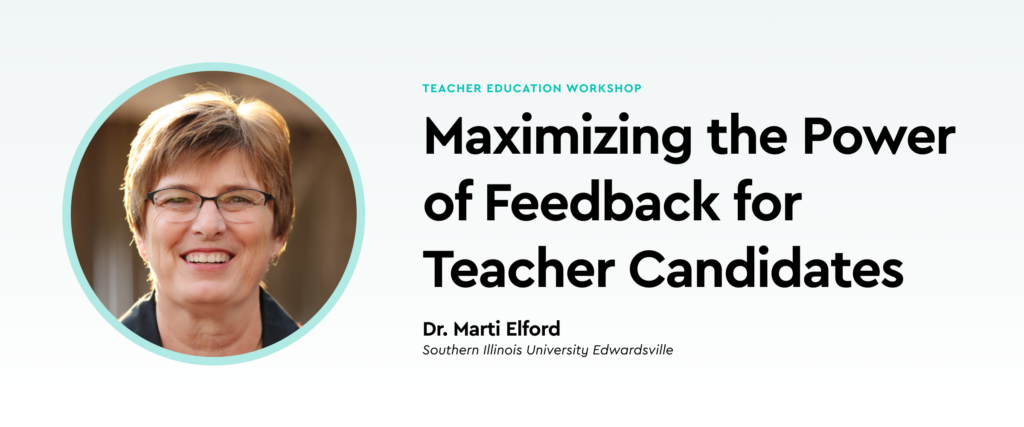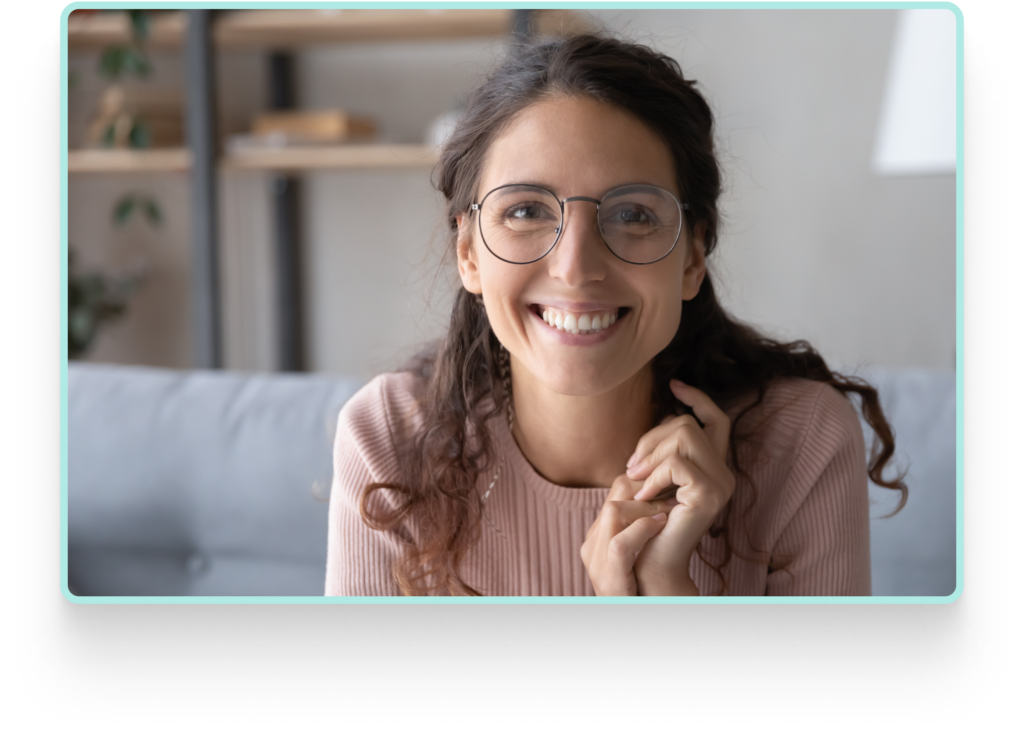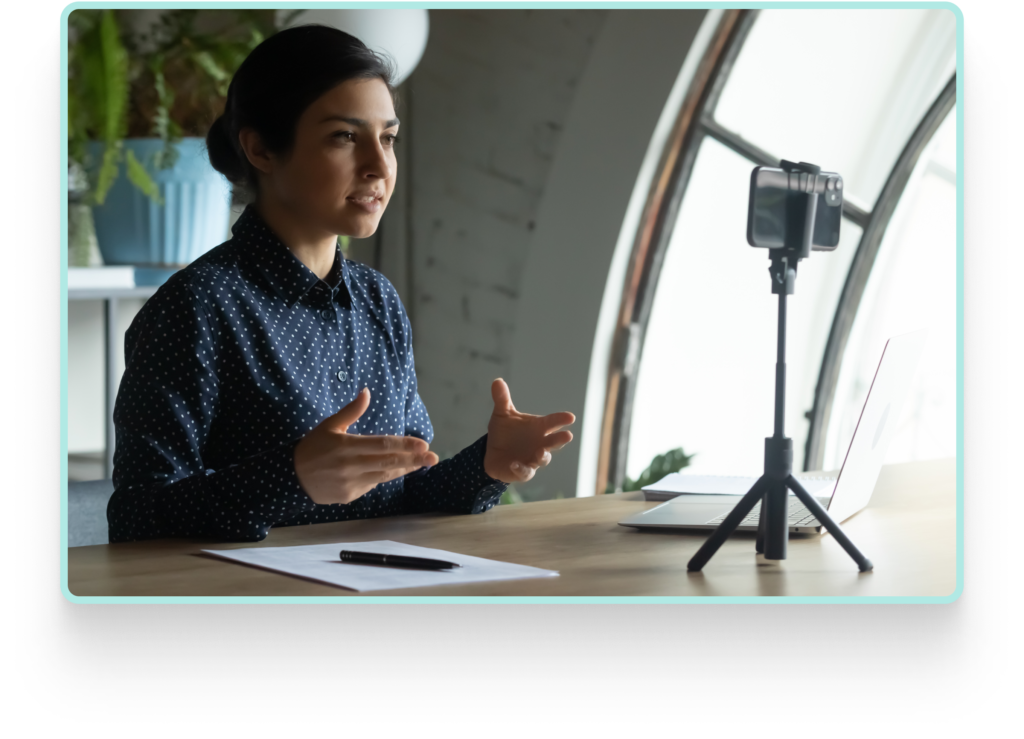Do you spend hours giving feedback, but some teacher candidates fail to absorb it?
You’re not alone. In an effort to diagnose this communication breakdown, we chatted with Dr. Marti Elford in a virtual workshop. She has spent decades researching and fine tuning her theories and techniques for feedback, and recently she joined colleagues to co-author a book about the topic, “GET Feedback: Giving, Exhibiting, and Teaching Feedback in Special Education Teacher Preparation.”
This short article focuses on one overarching idea from the workshop: how to give behavior-changing feedback by approaching teacher candidates as adult learners.
Watch the entire workshop to learn more about other feedback-related topics and issues.

Teacher Candidates As Adult Learners
You may be thinking, “Of course we approach teacher candidates as adult learners. What else would we approach them as?”
Many teacher prep professionals transfer their years—if not decades—of experience and expertise working with K-12 learners to higher ed. This expertise is crucial in helping prepare teacher candidates to become professional educators, but it can be problematic when it comes to feedback.
That’s because the techniques used to give K-12 learners feedback are not as effective for adult learners. If you want teacher candidates to grasp your feedback, the difference between K-12 learners and adult learners is significant enough to change your feedback strategy.

K-12 Learners vs. Adult Learners
How do adult learners differ from K-12 learners?
According to Dr. Elford, motivation is the most significant difference between K-12 learners and teacher candidates. “K-12 learners are designed to learn because their brains are still developing and neural pathways are being constructed,” Dr. Elford explained. “They’re more motivated to learn because of the interest and the curiosity about what’s going on around them.”
In addition to boundless curiosity, K-12 learners are more influenced by the external motivation of the adults around them, like teachers and parents. This means that “when an adult shows genuine care for a K-12 learner, that learner will be more motivated to learn whatever topic or skill the adult presents or proposes.”
In contrast, adult learners are less impressionable and have more calculated motivations. Already bringing a wealth of prior knowledge and experience, “they’re more motivated by whether there’s a personal payoff.” They create opinions about what knowledge and skills have intrinsic value.
As a result, if you try to give feedback to an adult on a skill or issue they don’t believe will help them, they won’t buy into your feedback. This is what leads to a feedback disconnect with your teacher candidates.
To learn more about behavior-changing feedback, watch the entire free workshop with Dr. Marti Elford.

Discovering What Motivates Your Teacher Candidates
This motivational difference should change your approach to giving teacher candidates feedback. Instead of deciding what her feedback will focus on, Dr. Elford discovers what motivates her teacher candidates and what feedback they find valuable.
In a Zoom conversation with each teacher candidate, she asks them what they want to focus on—what goals they have. From there, Dr. Elford tailors her feedback to address each student’s specific goals and concerns. This process is “a co-construction between teacher prep faculty and the teacher candidates,” said Dr. Elford. “And that’s part of what’s so powerful about feedback.”

Give Recipient-Centered Feedback
The idea of feedback being a co-construction butts up against the traditional model for feedback in higher ed. “When universities were established, the intent was for scholars to impart their knowledge to novices,” explained Dr. Elford. “In this model, feedback was all instructor driven,” it wasn’t recipient (i.e., learner) driven.
And it’s this instructor-driven feedback that causes a feedback disconnect in higher ed. “In Scott’s recent study, instructors across a variety of disciplines report the feedback they deliver is not read or acted upon.” It’s not just teacher preparation programs that struggle getting students to absorb their feedback.
Dr. Elford and her colleagues “hope that by putting the recipient at the center of the feedback, the feedback will be transformative.” After exhaustive research for their book, GET Feedback, Dr. Elford and her co-authors provide this definition of feedback:
Feedback is any information the recipient receives that informs or restructures their thinking or beliefs, related to their performance, knowledge, or skill.
In other words, effective feedback produces change, and it takes two to create feedback.
Using this definition, educators can no longer say they’ve provided feedback by simply writing down their thoughts. In order for teacher prep professionals to provide teacher candidates feedback, the teacher candidate must restructure their beliefs, performance, knowledge, or skill.
To learn more feedback tips, check out our ebook, “How to Give Effective Feedback to Students.”

A Video Tool For Adult, Learner-Centered Feedback
A believer in technology, Dr. Elford also shared how tech tools, like video software, can enhance and support adult, learner-centered feedback. To “double the power of feedback,” Dr. Elford has her students use GoReact video assessment software to record and watch videos of themselves teaching. In a journal assignment, candidates have the opportunity to reflect on the process and “construct meaning from the feedback they’ve experienced” with time-stamped, multimodal feedback in GoReact.
For Dr. Elford, using GoReact to record teaching videos, provides what Palmer Parker calls “the third thing.” By the third thing, she means that teacher candidates and instructors are “both looking at the same thing.”

She elaborated on this point: “It’s not me sitting in the back of the classroom writing copious notes. It’s both of us looking at that teaching and having a conversation about what we see. And a student can make a comment, and then I can piggyback or make a comment based on that comment,” said Dr. Elford. “It’s a little like a chat thread.”
Focus Your Feedback On Teacher Candidates
So if you want your feedback to make a difference, center it on your teacher candidates. Think about your teacher candidates: how they’re adults with their own beliefs and views on what feedback is the most helpful. Instead of guessing what they value or focusing on what you value as an instructor, invite your teacher candidates to collaborate and join your feedback model. Only when you collaborate and focus on teacher candidates, will you start to see behavior-changing feedback.














